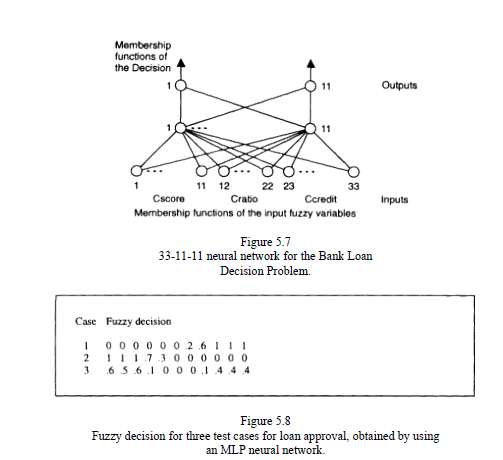SKEDSOFT
Introduction:-When problem knowledge includes explicit (fuzzy) rules, a connectionist system can be trained with them, as with input-output associations where the input patterns are the antecedent parts of the rules and the output patterns are the consequent parts. A fuzzy association A → B where A and B are fuzzy values, defined, for example, by their membership functions, can be memorized in an n-input, m-output neural network, where n is the cardinality of the universe Ux, m is the cardinality of the universe Uy, and x and y are fuzzy variables with corresponding fuzzy values A and B .
 This is the basis for using connectionist architectures for reasoning over fuzzy rules of the type IF x is A, THEN y is B. An MLP neural network can be trained with a set of fuzzy rules. The rules are treated as input-output training examples. When a new fuzzy set A' is supplied as a fuzzy input, the network will produce an output vector that is the desired fuzzy output B'. The generalized modus ponens law can be realized in a connectionist way. The following inference laws can also be satisfied by the same neural network, subject to a small error: A →B (modus ponens); Very A→Very B; More or less A →More or less B.
This is the basis for using connectionist architectures for reasoning over fuzzy rules of the type IF x is A, THEN y is B. An MLP neural network can be trained with a set of fuzzy rules. The rules are treated as input-output training examples. When a new fuzzy set A' is supplied as a fuzzy input, the network will produce an output vector that is the desired fuzzy output B'. The generalized modus ponens law can be realized in a connectionist way. The following inference laws can also be satisfied by the same neural network, subject to a small error: A →B (modus ponens); Very A→Very B; More or less A →More or less B.
A method for implementing multiantecedent fuzzy rules on a single neural network is introduced in Kosko (1992) and Kasabov (1993). The dimension of the input vector is the sum of the used discrete representation for the cardinality of the universes of all the fuzzy input variables. The dimension of the output vector is the sum of the corresponding discrete cardinality of all universes of the output fuzzy variables in the fuzzy rules. The fuzzy rules are assumed to have the same input and output variables but different combinations of their fuzzy values. If OR connectives are used in a rule, it may require that more training examples are generated based on combinations between antecedent parts of the rules for the Bank Loan Decision problem. The MLP consists of 33 input nodes, 11 intermediate nodes, and 11 output nodes. The inferred bank loan fuzzy decision values for the same three bank loan applicants as used in the example above, but here represented as fuzzy input values, are given as fuzzy membership functions in figure 5.8. The experiments show that the decisions inferred by the neural network for the three representative cases defined as fuzzy sets are correct. The ambiguity in the third solution vector clearly suggests 'not known decision' case.
A chain of neural networks can be designed if the fuzzy rules base consists of chains of fuzzy rules, for example:
Rule 1: IF X is A and Y is B, THEN Z is C
Rule 2: IF Z is C, THEN P is D
Using a chain of neural networks is a multimodular realization of the law of inference called "syllogism". A chain of neural networks is the simplest possible multineural network architecture that can realize simple time and space hierarchies in the solution process.
Some advantages when using the discussed here approach to building connectionist knowledge bases are: a possible mixture of rules and data examples, if available, in one system, and fast realization on specialized hardware.